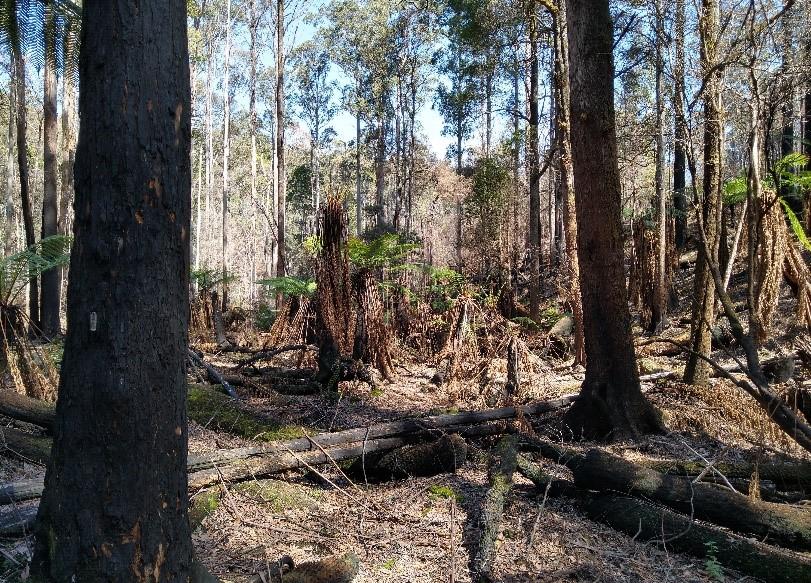
PUBLICATIONS
Published works

Understanding post-fire fuel dynamics using burnt permanent forest plots
| Title | Understanding post-fire fuel dynamics using burnt permanent forest plots |
| Publication Type | Report |
| Year of Publication | 2020 |
| Authors | Furlaud, JM, Bowman, D |
| Document Number | 569 |
| Date Published | 05/2020 |
| Institution | Bushfire and Natural Hazards CRC |
| City | Melbourne |
| Report Number | 569 |
| Keywords | eucalypt forest, fuel dynamics, permanent forest plots, post-fire |
| Abstract | The main goal of this study is to obtain empirical measurements of fuel load, structure and hazard within the first year after a fire to complement the measurements of fuel loads taken directly before the fires. This will not only allow us to precisely quantify the fuels consumed by these relatively low-severity fires, but it will also give us a baseline measurement of fuel loads. We can use this baseline to anchor measurements of fire severity and fuel accumulation in wet eucalypt forests related to other BNHCRC studies attempting to measure both fuel accumulation and the drivers of fire severity in wet forests. The flammability of tall wet eucalypt forests is poorly understood. A globally unique forest type, these forests consist of a highly-flammable Eucalyptus overstorey and a moist, non-flammable understorey consisting of rainforest and broadleadf trees and shrubs.[i], As a result, these forests are rarely available to burn, and almost no data exists on flammability and fire behaviour. While current fire behaviour models assume that fuel load and hence flammability increase asymptotically as a function of time since previous fire, there is much debate over whether this is the true trajectory of flammability in these forests. Understanding how fire severity is influenced by fuels and time since fire is a critical question in these forests. As the rate of spread and intensity of a fire is a function of fuels, fire weather and topography, and as only the latter can be physically manipulated, the effect of fire on fuel loads is extremely important to understand. Low-severity fires are known to reduce surface fine fuels loads across a landscape in certain forest types, so intentionally lighting low-severity fires (i.e. planned burns), will increase the encounter rate of wildfires with low fuel load areas.7 However the effect of low-severity fires in wetter forests is mostly unstudied. While reducing fuel ages has been shown to reduce both the extent and incidence of unplanned fires, the effect of low severity fires on actual fuel loads has not been explicitly quantified. While the period of effectiveness of a planned burn has been generally reported to be 5-6 years,8, these studies have looked at the empirical probability or size of unplanned fires as a function of fuel age, no studies that we could find in Australia measured fuel loads directly after a low-severity fire. |
| Refereed Designation | Non-Refereed |
Published Works


